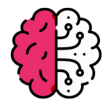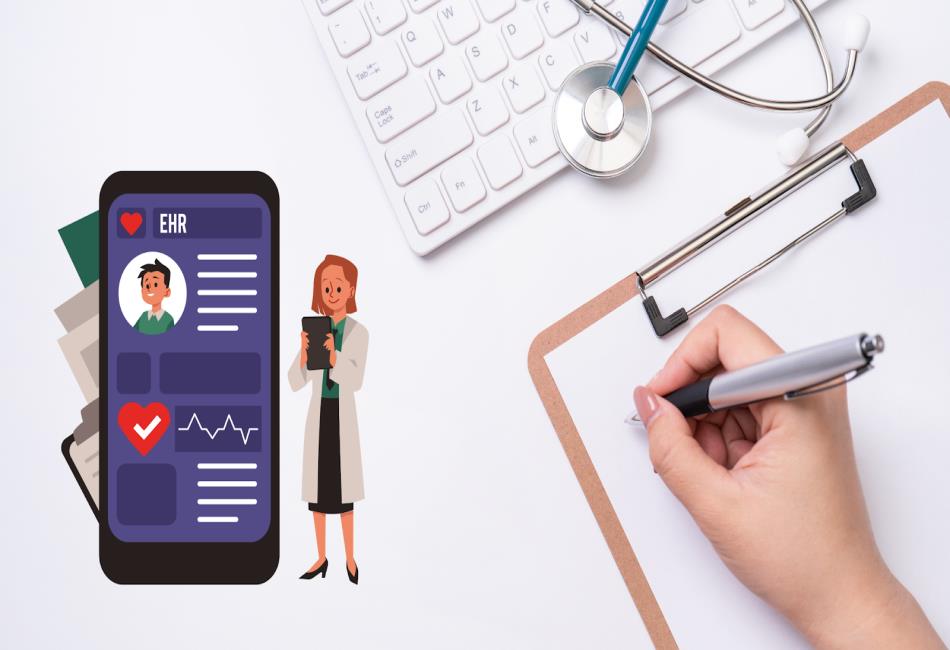Accurate coding in mental health records might seem like a behind-the-scenes task, but it plays a huge role in patient care, billing, and legal protection. Every code tells part of a patient’s story, missteps can lead to billing delays, denied insurance claims, or even gaps in treatment. When records are coded correctly, providers can give better care, stay compliant with regulations, and ensure they’re paid for the services they deliver.
In this blog, we’ll explore why code accuracy matters so much in mental health and how it impacts everything from daily operations to long-term outcomes for both providers and patients.
The Critical Role of Coding in Mental Health Care
Mental health coding serves as the bridge between clinical care and administrative processes, translating complex therapeutic interactions into standardized data points. This translation process directly impacts everything from treatment planning to financial sustainability.
Mental health diagnoses have increased dramatically in recent years, with providers documenting more cases of anxiety, depression, and trauma-related disorders. This growth has elevated the importance of mental health record accuracy as more patients seek specialized care. Proper documentation ensures these conditions receive appropriate clinical attention and insurance coverage.
The Financial and Clinical Impact
The relationship between precise coding and practice viability cannot be overstated. Studies indicate that mental health practices lose an average of $20,000 annually due to coding errors in mental health. Beyond financial implications, accurate coding communicates critical clinical information between providers and ensures appropriate treatment sequencing.
How Coding Bridges Clinical Care and Administrative Processes
Diagnostic codes in mental health records transform subjective clinical observations into objective data points. When reviewing a patient’s history, the icd-10 diagnosis codes list provides standardized terminology that communicates essential information about severity, duration, and specific symptoms. This standardization facilitates communication between different providers and systems while supporting reimbursement requirements.
The accurate translation of clinical assessments into proper codes lays the groundwork for everything that follows in patient care and practice management. As we’ll see next, this foundation begins with understanding the evolution of mental health documentation standards.
The Foundation of Mental Health Record Accuracy
The documentation standards we use today were developed through decades of refinement, creating increasingly precise frameworks for describing and categorizing mental health conditions. This evolution continues to shape how providers document and code mental health services.
The Evolution of Mental Health Coding Standards
Mental health record-keeping has transformed significantly over the past several decades. What began as broad, often stigmatizing classifications has evolved into nuanced diagnostic frameworks that capture the complexity of mental health conditions.
The transition from DSM-IV to DSM-5, alongside ICD-9 to ICD-10 migration, dramatically expanded available codes. This expansion provided greater specificity but also increased the complexity of mental health documentation standards. Today’s clinicians must navigate these detailed classification systems while maintaining focus on patient care.
The distinct nature of mental health coding, compared to other medical specialties, adds another layer of complexity. While many medical specialties rely heavily on objective laboratory findings or imaging, mental health assessments depend more on clinical interviews and behavioral observations.
Current Diagnostic Frameworks in Mental Health
The F-codes within the ICD-10 system form the backbone of formal mental health data accuracy. These codes capture everything from mood disorders to anxiety, substance use, and personality disorders, with specific subcategorizations reflecting severity and features. Mental health coding brings unique challenges, especially with time-based billing and dual systems like DSM-5 and ICD-10.
Providers must carefully document session lengths to use the correct codes, while also aligning diagnostic language across both systems. These added layers demand close attention to detail. With evolving standards and strict reimbursement rules, accurate documentation isn’t optional, it’s essential to ensure both proper care and steady revenue.
Financial Implications of Coding Accuracy
The financial health of mental health practices depends heavily on coding precision. Even minor documentation errors can significantly impact revenue cycles and create audit vulnerabilities.
Revenue Cycle Impact
Coding errors in mental health care don’t just cause small setbacks, they can disrupt your entire revenue cycle. One wrong code can lead to denied claims, delayed payments, and time-consuming follow-ups that pull focus from patient care. Many practices lose thousands each year due to simple mistakes or undercoding, which means they’re not fully paid for the work they do.
This hits small practices especially hard, where billing resources may be limited. Reimbursement also varies by provider type, so getting credentials and modifiers right is key. Accurate coding ensures you’re properly paid and keeps your practice financially stable and efficient.
Audit Risk Management
Mental health providers are under growing scrutiny from insurers and regulators, making accurate documentation more important than ever. Patterns like using the same codes for all patients or relying too often on vague diagnoses can trigger audits and lead to serious financial consequences. The Office of Inspector General regularly reviews mental health billing, signaling the need for careful compliance.
To avoid penalties and maintain payer relationships, practices must adopt clear, consistent documentation processes. But beyond avoiding audits, precise coding improves clinical care. It ensures patients receive the right treatment while helping providers stay organized, protected, and aligned with best practices.
Clinical Benefits of Accurate Mental Health Coding
Beyond financial considerations, the benefits of accurate coding in healthcare directly impact patient outcomes. Precise documentation supports truly effective treatment planning and care coordination.
Enhancing Treatment Planning
Accurate diagnostic coding directly informs intervention strategy selection. When a clinician precisely documents specific phobia subtypes or panic disorder with agoraphobia, for example, treatment protocols can be tailored more effectively to address particular symptom patterns.
Mental health record accuracy also facilitates progress tracking over time. As symptoms evolve during treatment, documentation changes reflect these clinical shifts, creating a comprehensive picture of the patient’s journey. This longitudinal perspective proves invaluable for treatment modifications.
Coding that captures severity and functional impact helps clinicians prioritize interventions and set realistic treatment goals. These detailed notations support medical necessity determinations while guiding therapy focus areas.
Facilitating Care Coordination
Using standardized codes helps behavioral health providers and primary care physicians communicate more clearly, leading to better, more coordinated care. When everyone uses the same language, treatment plans are more consistent and effective across teams. Accurate, shared records prevent gaps in care and reduce the risk of conflicting treatments. They also make referrals smoother.
When diagnoses and history are clearly documented, specialists can act quickly without repeating earlier steps. While precise coding improves care quality, reaching that level of accuracy means addressing common documentation challenges that mental health professionals face every day. It’s a critical step toward more connected, patient-focused care.
Common Mental Health Coding Challenges and Solutions
Mental health providers encounter unique documentation challenges that can undermine mental health data accuracy. Identifying these common pitfalls enables practitioners to implement effective solutions.
Documentation Pitfalls
Inadequate specificity represents one of the most prevalent coding errors in mental health. Using “unspecified” anxiety or depression codes when clinical documentation supports more precise diagnoses reduces both clinical clarity and potential reimbursement.
Time documentation issues frequently trigger claim denials in mental health. Session start and end times must be clearly recorded to support time-based therapy codes, yet many providers record only scheduled rather than actual session durations.
Over-reliance on familiar codes creates another common problem. Using the same diagnosis codes for most patients raises red flags with payers and fails to capture the true clinical diversity within a practice’s patient population.
Coding Best Practices for Mental Health Professionals
Using clear, behavioral language in documentation strengthens diagnostic coding by providing specific, measurable details. Instead of noting “patient appears depressed,” describing symptoms like “reports sleeping 3–4 hours per night” or “expresses feelings of worthlessness” supports accurate code selection. Templates can also help, when used correctly, they standardize key elements while still allowing for personalized notes.
To capture the full clinical picture, it’s essential to document comorbidities and secondary conditions that influence care. This not only improves treatment planning but also ensures proper reimbursement. With the right tools and attention to detail, providers can boost both efficiency and the quality of their documentation.
Moving Forward: Excellence in Mental Health Documentation
Accurate mental health records are more than just paperwork, they’re the backbone of effective care and a stable practice. Precise coding helps ensure patients get the right treatment, claims are paid on time, and providers stay protected during audits. As value-based care becomes the norm, solid documentation supports better outcomes and smoother operations. Investing in structured processes and the right tools isn’t just smart, it’s essential. In behavioral health, accuracy isn’t a formality; it’s the foundation for delivering care that truly makes a difference.
FAQs on Critical Mental Health Coding
- Why is accuracy important in mental health diagnosis?
Accurate diagnosis determines appropriate treatment selection and medication choices. It enables providers to target interventions precisely, avoiding unnecessary treatments that waste time and resources. Furthermore, an accurate diagnosis allows for monitoring and adjusting treatment as needed.
- Why is accuracy important in medical coding?
Coding errors can affect the patient’s healthcare, insurance, and payments. Coding accuracy is also crucial for the integrity of a patient’s medical record. This will tell a full story of the patient’s medical history and support medical necessity — which is essential for payment and authorization of future services.
- Why is it important to code accurately?
This starts with accurate coding. Why is coding accuracy important? Accurate coding is critical in today’s health industry. Coding is utilized for appropriate patient treatment, reimbursement, research, the basis of financial and clinical decision making and worldwide comparative trending.



